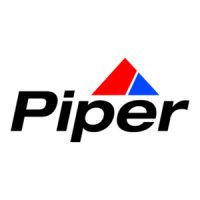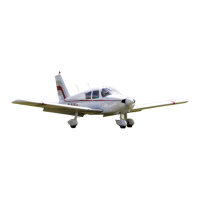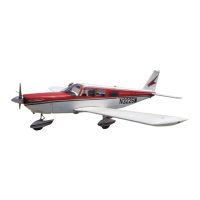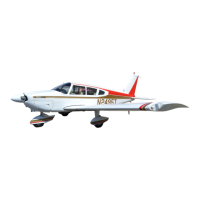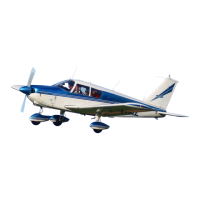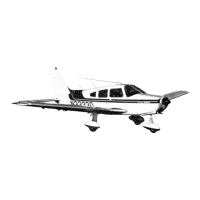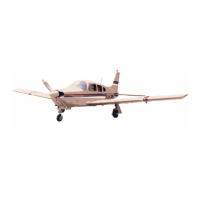
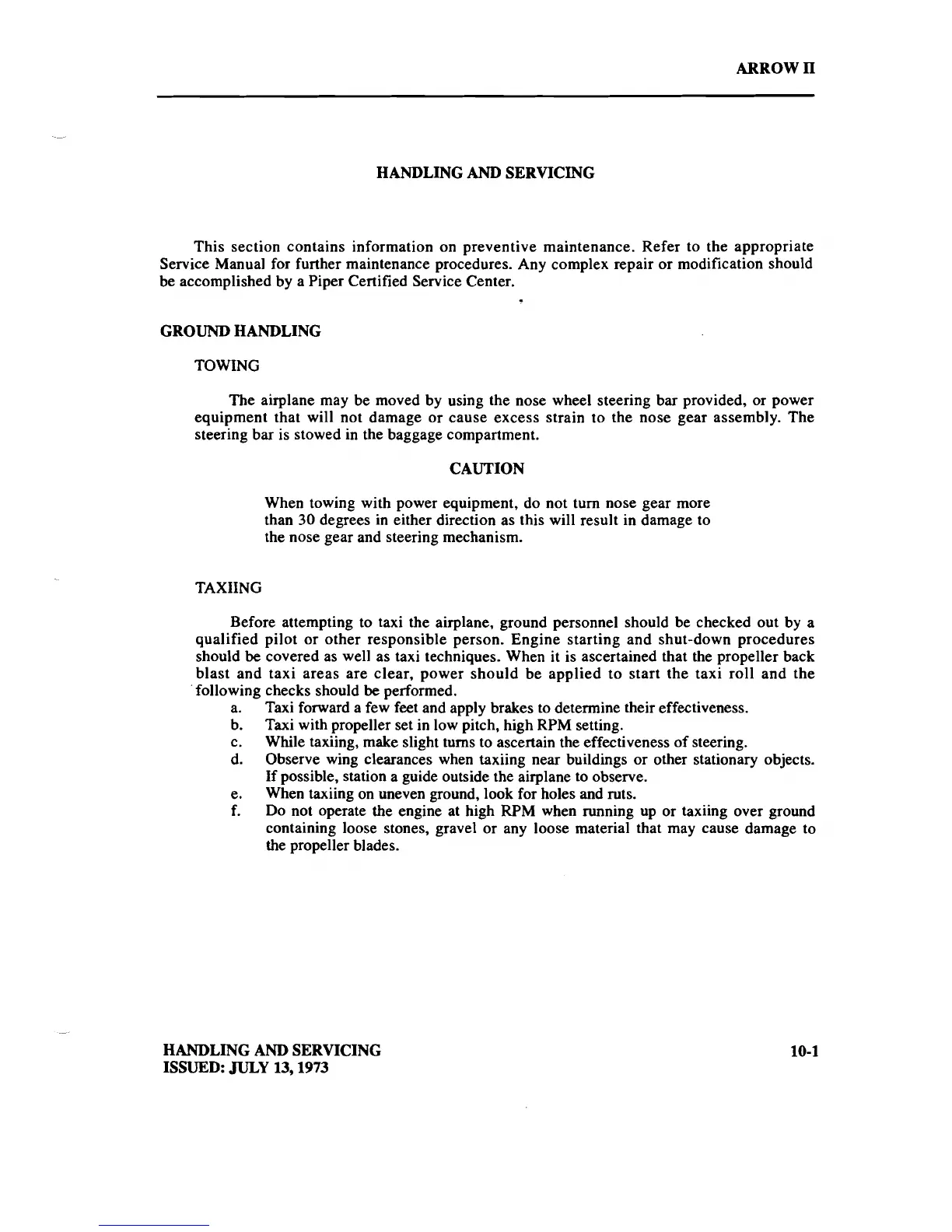 Loading...
Loading...
Do you have a question about the Piper Cherokee Arrow II and is the answer not in the manual?
| Manufacturer | Piper Aircraft |
|---|---|
| Model | Cherokee Arrow II |
| Category | General Aviation |
| Engine | Lycoming IO-360-C1C6 |
| Horsepower | 200 hp |
| Landing Gear | Retractable Tricycle |
| Maximum Takeoff Weight | 2, 750 lbs |
| Wingspan | 35 ft 6 in |
| Seating Capacity | 4 |
| Propeller | Two-bladed, constant speed |
Details the aircraft's weight limits and standard empty weight.
Information on the engine and propeller specifications for the aircraft.
Specifies fuel requirements and oil viscosity for operation.
Provides physical measurements of the aircraft, including wingspan and length.
Describes the aircraft's landing gear system, including wheel base and tire pressure.
Overview of the Cherokee Arrow II, its design and operational capabilities.
Details the aircraft's construction materials and structural design features.
Specifics on the Lycoming engine, propeller, and induction system.
Explains the hydraulic actuation, controls, and safety features of the retractable landing gear.
Describes the operation of the aircraft's flight control surfaces and systems.
Details the dual fuel tanks, selector, pumps, and venting.
Outlines the aircraft's electrical power sources, components, and circuit protection.
Explains the system powering gyro instruments, including pump, regulator, and gauge.
Describes the layout and function of the flight and engine instrument displays.
Details the system for airspeed, altimeter, and vertical speed indicators.
Explains the cabin comfort systems for heating and airflow.
Describes interior elements for passenger comfort and safety, including seats and windows.
Information on the aircraft's baggage compartment capacity and loading.
Explains the stall warning system activation and indicators.
Details the aircraft's air conditioning system components and operation.
Specifies the operating limitations for the aircraft's engine, fuel, and performance.
Outlines standard operating procedures and emergency actions for the aircraft.
Provides performance data for stalls, including speeds based on bank angle and configuration.
Information on the installation and operation of optional aircraft equipment.
Recommended actions for an engine fire occurring during the starting sequence.
Procedures for handling engine power loss during the take-off roll or initial climb.
Steps to take if the engine loses power while airborne.
Guidance for executing a forced landing without engine power.
Steps for a normal landing with the landing gear extended and locked.
Procedures for conducting a landing with the landing gear retracted.
Actions to take in case of propeller governor malfunction causing overspeed.
Manual procedures for extending the landing gear if automatic systems fail.
Instructions for recovery if the aircraft inadvertently enters a spin.
Procedures for identifying and extinguishing fires in different aircraft areas.
Actions to take upon indication of low or zero oil pressure.
Steps to address a loss of fuel pressure indication.
Guidance for responding to high oil temperature indications.
Procedures for handling a loss of alternator output and managing electrical load.
Step-by-step process for weighing the aircraft to determine empty weight.
Calculation of the aircraft's empty weight center of gravity using measured data.
Details on the aircraft's certified empty weight and C.G. location.
Calculation of the aircraft's useful load based on gross and empty weights.
Guidelines for loading the aircraft to remain within the approved weight and C.G. envelope.
Comprehensive pre-flight inspection checklist and procedures for the aircraft.
Detailed steps for starting the engine under various conditions, including cold, hot, and flooded states.
Procedures and techniques for performing a safe and effective take-off.
Recommended airspeeds for best rate and angle of climb, and en route climb speed.
Stalling speeds at various bank angles and flap configurations.
Guidance on selecting power settings, mixture, and fuel management for efficient cruising.
Procedures for approaching and landing the aircraft, including flap and gear settings.
Steps for safely shutting down the engine after landing.
Table correlating indicated airspeed (IAS) with calibrated airspeed (CAS) under different conditions.
Operation and performance effects of the aircraft's air conditioning system.
Chart to determine density altitude from temperature and pressure readings.
Graphs showing take-off distance based on density altitude and flap settings.
Chart illustrating rate of climb versus density altitude.
Graphs showing true airspeed at various altitudes and power settings.
Charts detailing the aircraft's range based on altitude, power, and reserve fuel.
Graph showing stalling speeds at different bank angles and configurations.
Graph illustrating stalling speeds at varying gross weights and configurations.
Chart showing glide range versus altitude under specific conditions.
Graphs detailing landing distance based on density altitude and flap settings.
Table providing recommended engine power settings for various altitudes and airspeeds.
Procedures for safely moving the aircraft on the ground.
Guidelines for towing the aircraft using a tow bar or power equipment.
Procedures and checks for safe taxi operations.
Recommendations for parking the aircraft securely.
Proper procedures for mooring the aircraft to ensure immovability and security.
Procedures for cleaning the engine compartment and its components.
Steps for cleaning the aircraft's landing gear assembly.
Methods for washing and cleaning the aircraft's exterior.
Proper techniques for cleaning the aircraft's windows and windshield.
Procedures for cleaning interior cabin surfaces like upholstery and panels.
Methods for cleaning the aircraft's carpets to remove dirt and spots.
Maintenance procedures for the engine's induction air filter.
Information on checking and maintaining the aircraft's brake system.
Procedures for servicing the aircraft's landing gear oleos and wheels.
Guidelines for cleaning and inspecting the propeller and spinner.
Specifies the correct type and quantity of oil for the engine.
Covers fuel requirements, tank filling, and draining procedures.
Precautions and procedure for filling the aircraft's fuel tanks.
Steps for draining fuel lines and quick drains to check for contamination.
Recommended tire pressures and maintenance for proper inflation.
Procedures for checking and servicing the aircraft battery.
Information on installing a winterization kit for cold weather operation.
Information on maintenance tasks that can be performed by the pilot.
Outlines mandatory inspections and service intervals for continued airworthiness.
